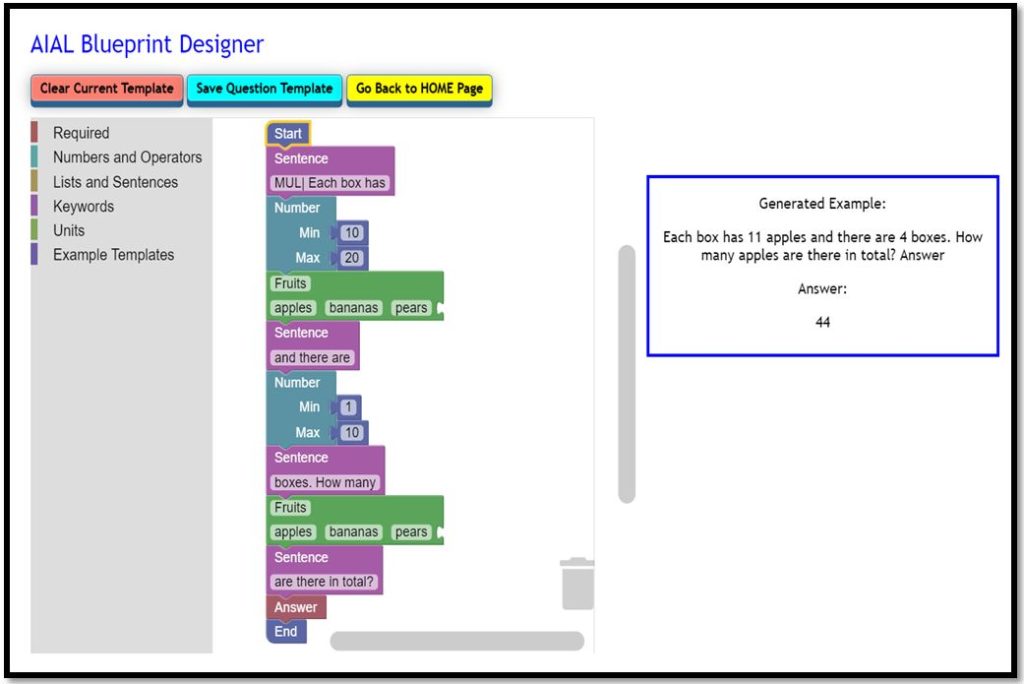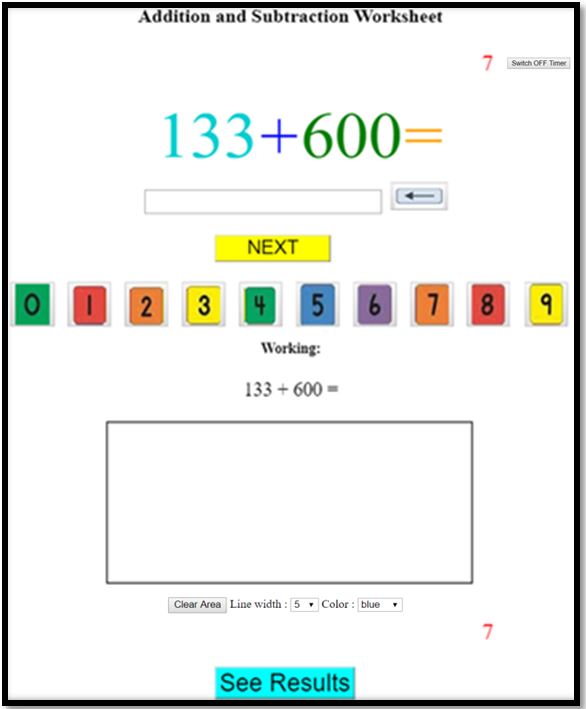Education is currently facing various challenges. Teachers acknowledge that each student is unique, but teaching methods are targeted towards the whole class, making it difficult for teachers to cater to the needs of individual students.
The AI Assisted Learning (AIAL) system was designed to provide a personalized learning experience. It consists of two parts: the web-based application and the Generative Adversarial Network (GAN) simulation. The K-Nearest Neighbors AI algorithm was implemented in the app in order to choose the following question while the GAN, consisting of a Bi- directional LSTM (generative model) and a classification model (discriminator), simulates students answering an Addition and Subtraction worksheet (learning) thereby evaluating student performance without the need to perform a longitudinal study.
The AIAL browser-based application is aimed at both teachers and students and was specifically designed to be used on their tablets. It generates personalized Mathematics classwork and homework worksheets for primary school students aged between 8 and 10 years. Students can immediately view the results of the completed worksheets
and unlock trophies. Teachers may use the app to create their own exercises or utilize the preloaded curricula. The AIAL app was tested in five schools in Malta; on a total of 280 students. Students were randomly divided into 4 test groups; one control group and the other three groups that used the app at school and/or at home. Teachers used the Blueprint Designer and Teacher Dashboard sections of the app. Both students and teachers answered separate questionnaires regarding their experience using the app.
When the pre-test and post-test results were compared, it was noted that low-performing students who used the app benefitted the most, with a 23.2% improvement (on average), while there was no significant difference (no improvement) between the test results of the Control Group. From the questionnaire responses, it resulted that 71.9% of the students preferred working out the worksheets on the AIAL app rather than on paper. The teachers surveyed agreed that the app is easy to use and a useful resource. Although the system is still in its primary stages of development, the initial results are very promising.


References
[1] L. A. Outhwaite, A. Gulliford, and N. J. Pitchford, “Closing the gap: efficacy of a tablet intervention to support the development of early mathematical skills in uk primary school children,” Computers & Education, vol. 108, pp. 43–58, 2017.
[2] C. A. Tomlinson, “Mapping a route toward differentiated instruction,” Educational leadership, vol. 57, pp. 12–17, 1999. [3] M. Zhang, R. P. Trussell, B. Gallegos, and R. R. Asam, “Using math apps for improving student learning: An exploratory study in an inclusive fourth grade classroom,” TechTrends, vol. 59, no. 2, pp. 32–39, 2015.
Student: Lara Caruana Montaldo
Supervisor: Prof. Alexiei Dingli
Course: B.Sc. IT (Hons.) Artificial Intelligence
